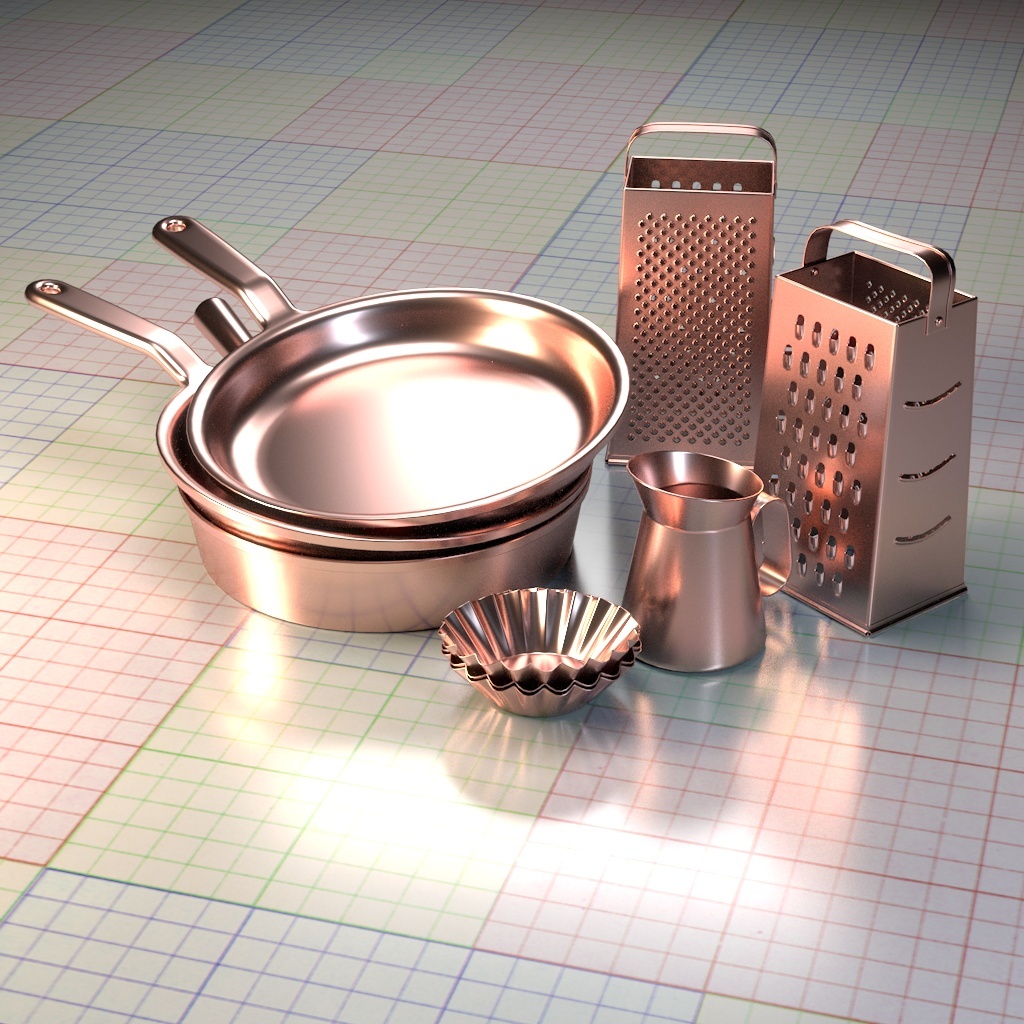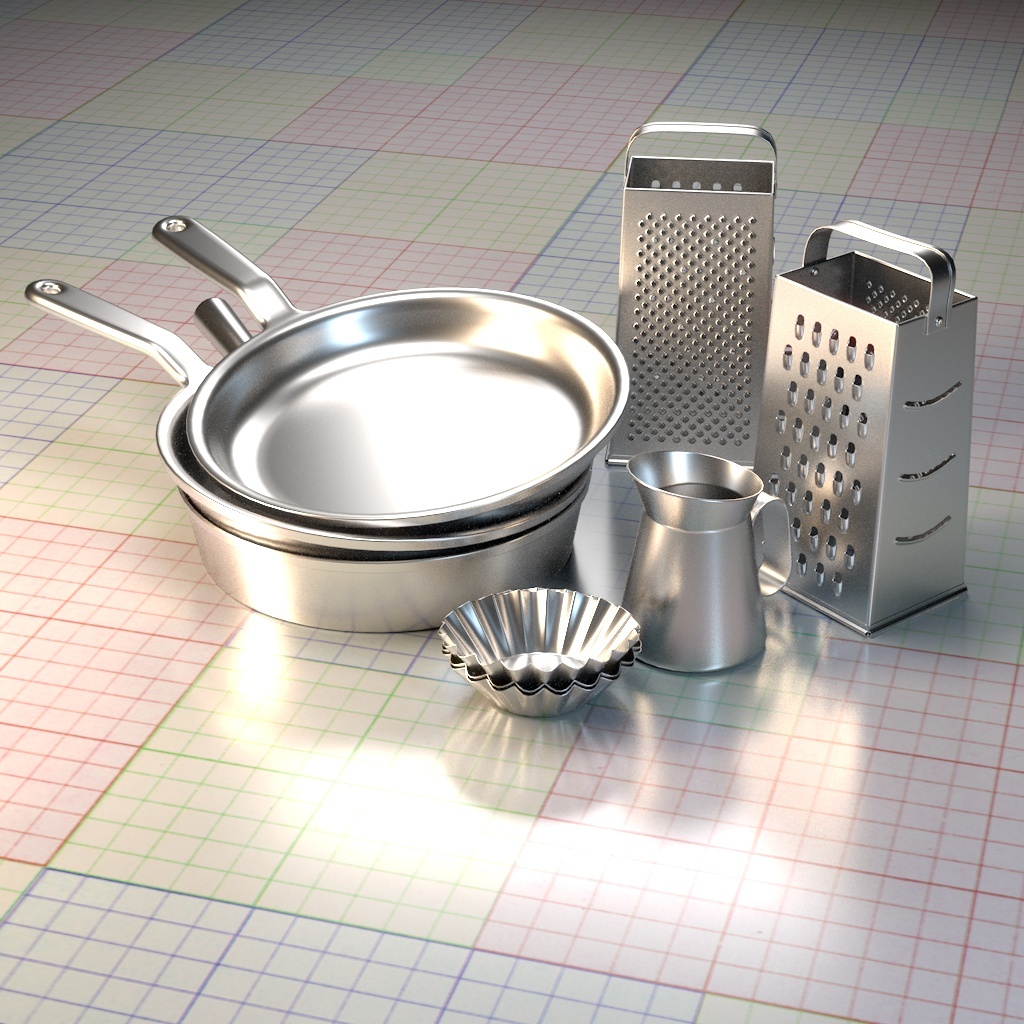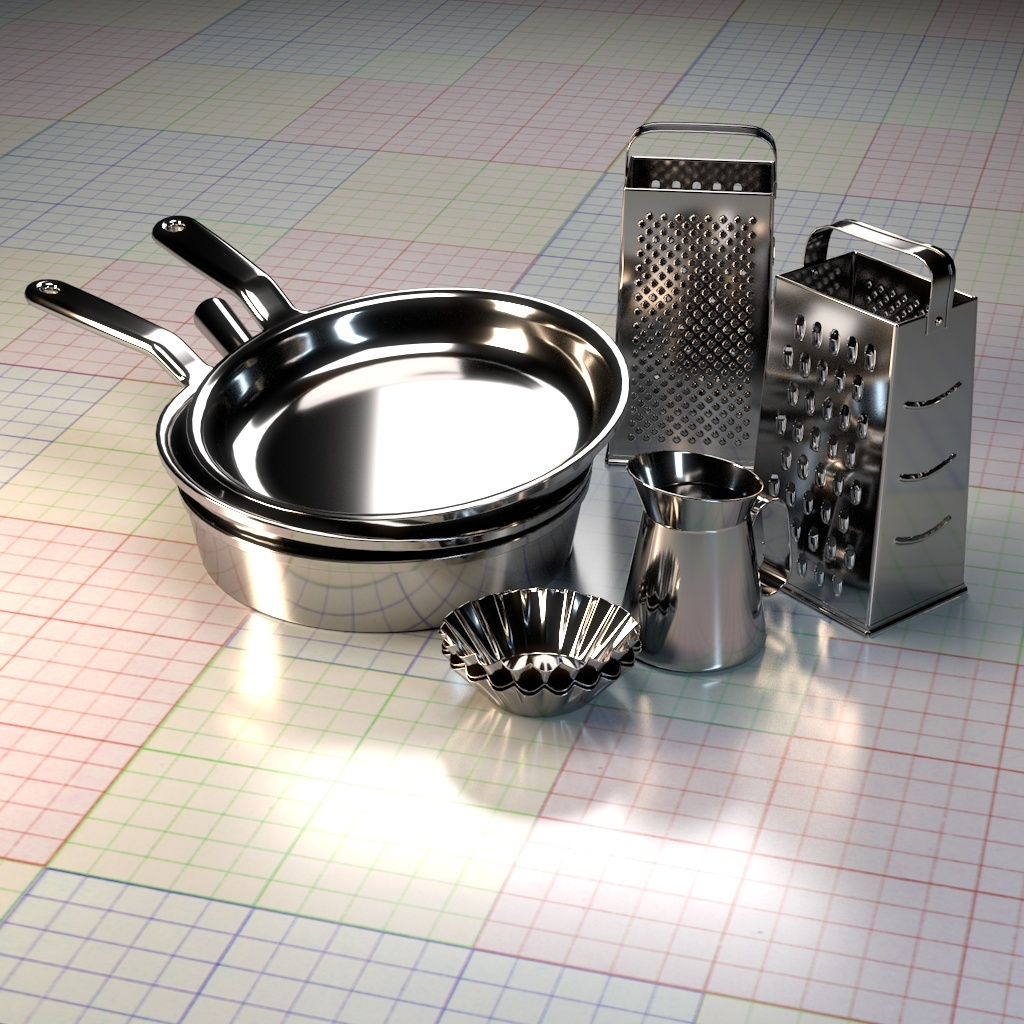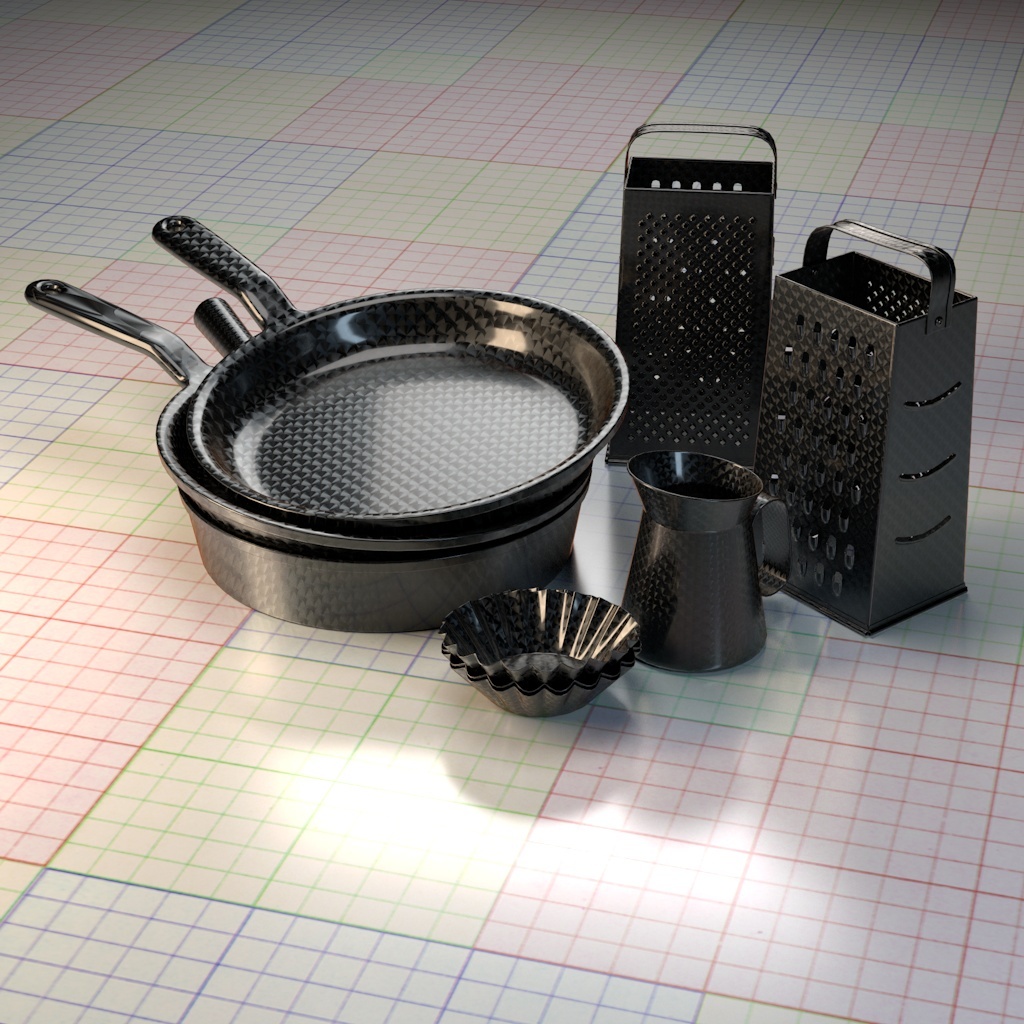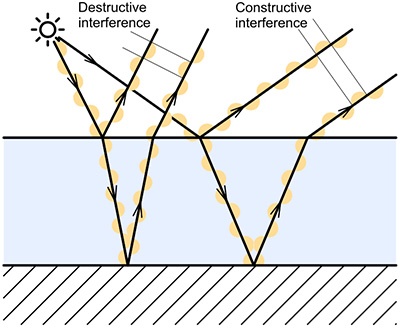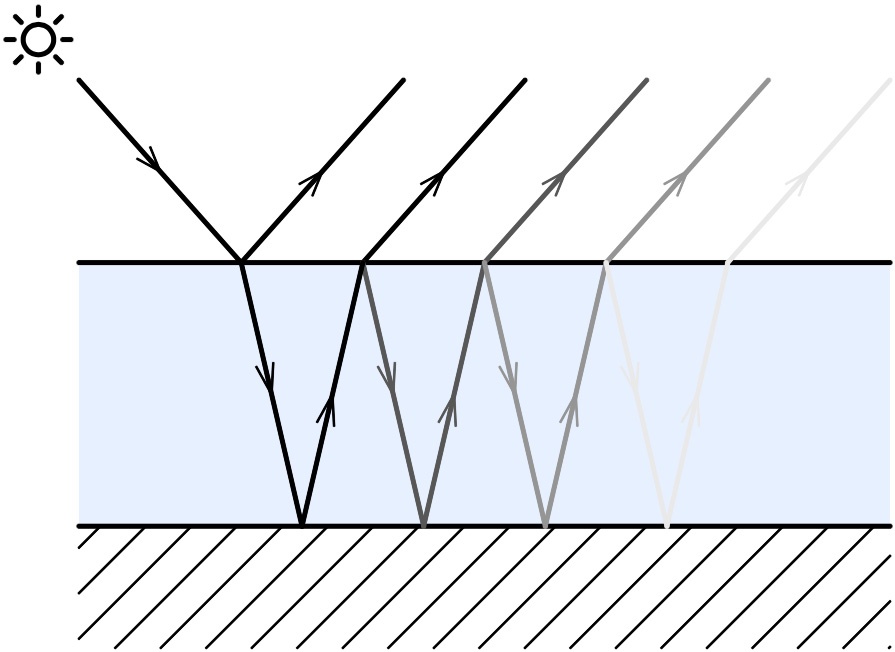...
CopperReflectivity [0.9466, 0.6, 0.5382] | GoldReflectivity [ 0.8841, 0.6009, 0.3480] |
AluminiumReflectivity [ 0.9094, 0.8889, 0.8715] | IronReflectivity [ 0.5351, 0.5109, 0.4958] |
SilverReflectivity [ 0.9521, 0.9246, 0.8911] | CarbonReflectivity [ 0.1542, 0.1395, 0.1312] |
Technical Description
Tempering (thin-film interference)
Interference colours are produced when metal is heated and a thin film of metal's oxide forms on the surface. They are dependent on the wavelength and angle of the incident light, the thickness of the oxide film and the refractive indices of the oxide material. This effect is also called thin-film interference .
Figure 1: Explanation of thin-film interference. When the phase difference between the two reflected beams is an even integer multiple of the wavelength of the beam in the film, then the two reflected beams tend to interfere constructively. If the phase difference between the two reflected beams is an odd integer multiple of the wavelength of light in the film, the beams interfere destructively. | Figure 2: Light path in a thin film of the metal's oxide. |
Tempering vs. Coating
| Info | ||
|---|---|---|
| ||
Note that coating differs from tempering in that it is used to render a relatively thick medium that has been applied on top of the metal (such as the case of car paint). Tempering produces a very thin layer of oxyde on the metal which can produces interference. |
Anisotropy
From Wikipedia: "In the field of computer graphics, an anisotropic surface changes in appearance as it rotates about its geometric normal, as is the case with velvet".
...
